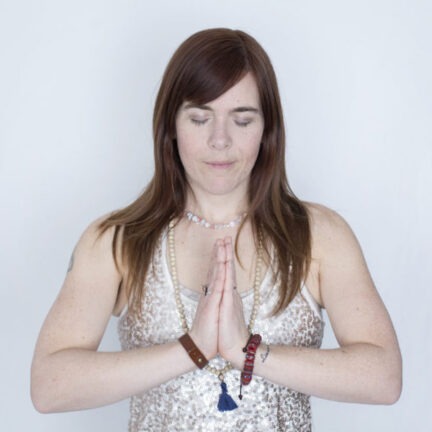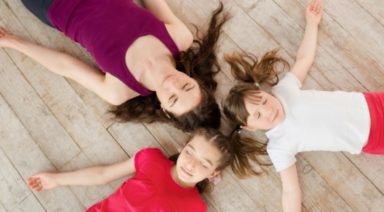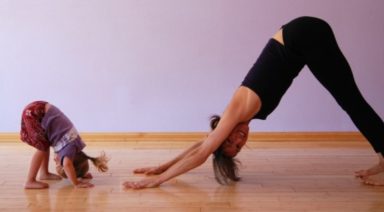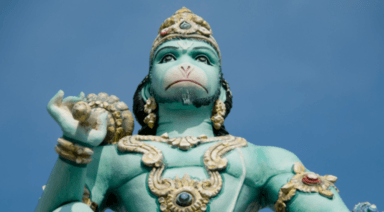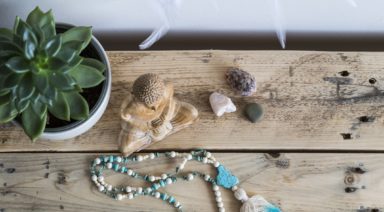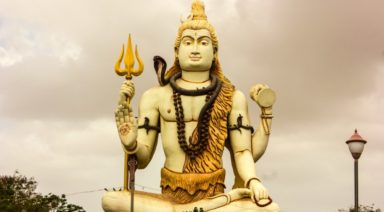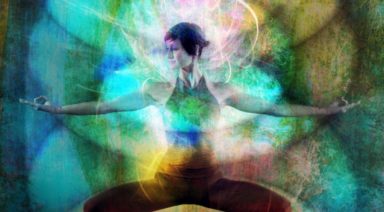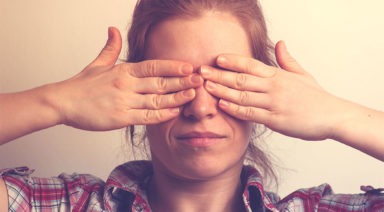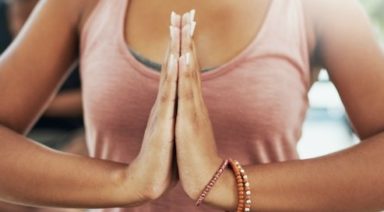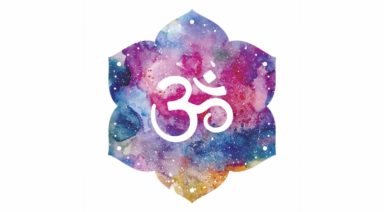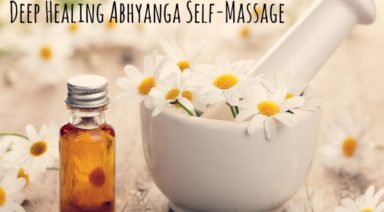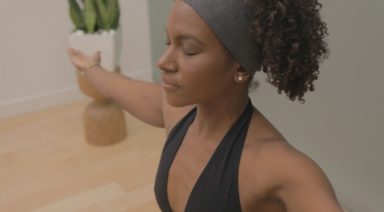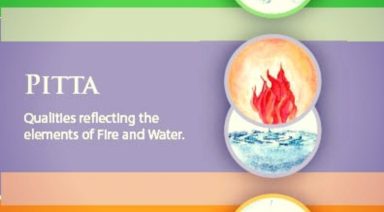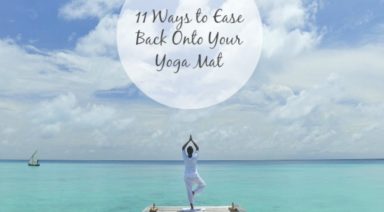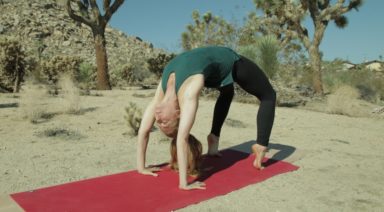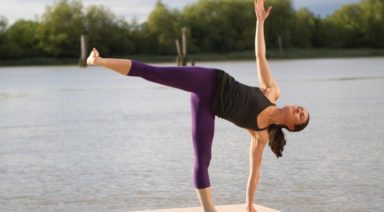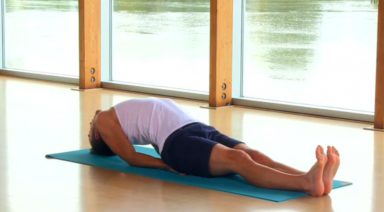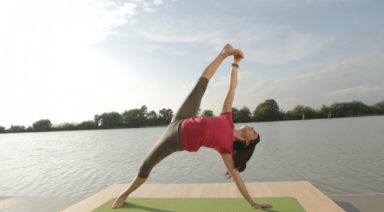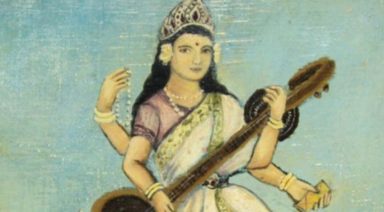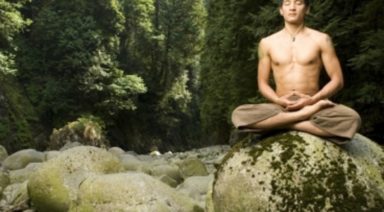5 Ways Yoga Can Help Postpartum Depression and Anxiety

There is nothing worse than going from the feelings of pure joy and complete satisfaction to fear and frustration—sometimes in a single day. Many women get postpartum depression or anxiety after their babies are born, and many women do not. Sometimes these feelings do not even set in until well into the first year of a baby’s life. It is more common than you think for a new mom to feel intense anxiety, fear, frustration or sadness.
The best we can do to prepare for any big change in our lives is to perform the practices of yoga, because our minds and our hearts will know what to do when the challenges begin to arise. These practices are intended to be sprinkled throughout the busy day of a mom. Taking between one and five minutes several times a day to center in can be a powerful practice, and should not be underestimated. Do what you can to take care of yourself on a daily basis, and just consider it part of your regular routine – along with changing diapers, preparing food and playing with your kids!
1. Breathe. Performing any type of breathwork can be extremely valuable to have in your toolbox when things start to get overwhelming. It is important to understand that you do not need to have tons of time on your hands in order to practice breathwork. You can breathe with intent for ten seconds and it could help change your perspective. Try this: Close your eyes. Focus on drawing the breath into the belly, expanding the belly as much as you can. On the exhale, release any held tension in the shoulders, eyes, jaw and forehead. Take 5 – 10 breaths.
2. Focus. Here I use the word focus, because it is much less intimidating than the word meditation. But really, I am asking you to do a few minutes of meditation. Try this: Close your eyes, and draw your attention to your third eye (the space between the eyebrows). Begin to pour your awareness into that space, perhaps visualizing an orb of white light resting there. Breathe consciously into this orb, perhaps expanding it. Take 5 – 10 breaths.
3. Love. Love is everywhere. You do not have to see it all of the time, but just know that it is there. Take the time to seek out love – in your child’s face, in the sounds of nature, in the changing colours of the sky. Seek out love, and enjoy the sensations of it. Use the memories of love to bring you into that vibration when you begin to feel anxious, sad or lonely. Try this: Draw a heart in red crayon and write down the things you love inside. Tack it up somewhere so you can see it often.
4. Acceptance and Letting Go. This is a good practice to use when practicing asana. Some incredible poses for acceptance and letting go are: Pigeon, Fish and Forward Bends. Try this: Get into one of the above-mentioned poses, and work your way to the edge of comfort and discomfort. The idea is to go towards any feelings of tension, tightness or emotion. Breathe into that space, and perhaps even say in your mind, “I see you, and I accept you”. By acknowledging the feeling, it will naturally soften, making way for more space and freedom in your body and mind.
5. Present Moment Awareness. It is important to remember that while many people will tell you that the baby and toddler years go by very quickly, it can sometimes feel like each day repeats itself and drags on. That is because you are forced to live in the moment, not as a chosen meditative practice or a soothing yoga class, but as your life. Try this: Greet each moment consciously and say in your mind what is happening, “I am walking into baby’s room, I am saying hello to baby, I am picking baby up with love. I am sitting on the floor with baby, all she sees is me. I am loving my baby, I am loving my child.” And once baby gifts you with a quiet moment to reflect on your day, relish it, forget the laundry and the dishes. And accept the gift of the present moment.
There is no way that I could go into detail here about the many challenges of motherhood, and the ways that I personally got through those intense first years. And there is no perfect way to cope with the ups and downs of becoming a mother. The most important thing to remember with the transition of motherhood is that you cannot get around it – you simply must go directly through it. Expand on these ideas in your own way, and be sure that once you have landed on the other side of the transition, that you pass on your knowledge and hard-earned wisdom to someone else.
Animal Yoga Poses for Kids
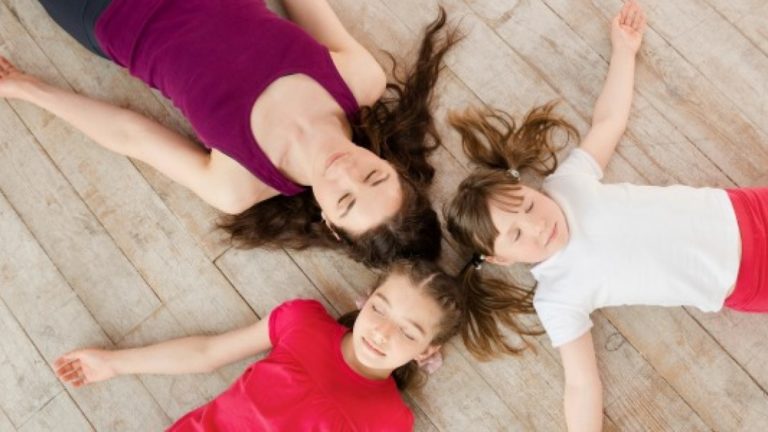
In the midst of discussing her chicken nuggets (she eats only the dinosaur shaped ones in the green box), she rolled back onto the padded window seat, bent her four-year-old knees into her little armpits and grabbed her feet. Happy Babies Pose. Gigi kept right on talking, sticking her head between her feet to look up at me with big brown in her smiling face. I marveled at my niece’s intuition and ability to move into yoga poses. At any time. And although the practice of yoga is very much a part of my life, her mom, my sister Robin, doesn’t practice yoga at all. In fact, when I asked her, Robin said Gigi had not been exposed to yoga. And yet, at four years old, she knew exactly how to move her body into many of the traditional poses.
Yoga postures, referred to as asana in Sanskrit, the language of Yoga, emulate animal shapes, elements in nature, and aspects of our surrounding world. Kids naturally create many these types of shapes with their bodies, in playful and expressive ways. My first thought was, “oh no! You shouldn’t compress the abdomen like in Happy Baby pose, mid-meal. Nor is it ideal to combine yoga and eating.” But my second thought, “Of course she’d come into Happy Baby pose, as she’s happiest when she’s eating dinosaur nuggets, the kind from the green package,” reminded me of the power of connection through yoga. Happy feeling = Happy Baby Pose.
With tools to listen and deepen our intuition, the practice of yoga connects us with our internal landscapes: breath, sensation, body awareness, and mental & physical balance. Simultaneously, yoga poses join us with our external landscapes, with the natural world and with one another. For example, when kids are encouraged to take the yoga pose of Frog, squatting with feet and knees wide, they can’t help but want to make some ‘ribbit’ sounds and hop around!
In our technology-saturated world, connection with nature, each other, and ourselves becomes an even more vital practice.
There are numerous studies on the benefits of yoga poses for kids. One such study, conducted by Kristie Patten Koenig, an assistant professor of occupational therapy at New York University, focused on elementary school kids and yoga. She and her team of researchers and teachers had the kids follow a specific routine each morning, five days a week, for 17 minutes. The routine: mats out, breathe deep, assume yoga poses, tense and relax muscles, and, finally, sing. Koenig says that yoga was effective because it seems to play to the strengths of kids (particularly those with autism), while also reducing stress. The researchers surveyed teachers at a school in the Bronx who said a daily yoga program reduced the kids’ aggressive behavior, social withdrawal and hyperactivity. “We know that anxiety fuels a lot of negative behavior, so the yoga program gives them a strategy to cope with it,” Koenig reported. “And if it’s done every morning, it becomes an integral part of the day that sets the status of the classroom and allows the kids to become calm, focused and ready to learn.”
In addition to aiding connection, yoga poses and the practices of yoga (mindfulness and breath along with movement) cultivate kids’ abilities to focus and concentrate. Yoga is increasingly being used in classrooms across the U.S. to improve the behavior and performance of kids. Additional research suggests that yoga practices help kids concentrate and focus, and improves their strength, motor coordination and social skills. Teachers report that yoga poses for kids aid in decreasing problematic behaviors.
Eight Yoga Poses for Kids
Whether you’re a teacher, parent, relative, or babysitter, kids yoga poses can be utilized in either formal teaching practice or informal play. Here are eight yoga poses for kids that can be used to enhance connection with the animal kingdom, themselves and each other. Kids can learn to welcome the sun in the morning and say goodnight to the sun in the evening, in their own yogic way.
As you’re directing kids into these shapes, allow space for their creativity and intuition to be a part of the practice. To create a deeper sense of unity and interaction, yoga mats can be placed in a circle. Use the time setting up the poses and between poses to provide information about the animal(s), their behaviors, and what we have in common with them and with each other. Allow space for both learning and play, while encouraging interaction with one other when appropriate and also the ability for each kid to connect with their own breath and sensations.

Lion Pose
- Come to hands and knees on the mat to create a table position
- Face soft to start
- Draw hips back towards heels in a pre-pounce
- Pounce forward on the mat, staying on hands and knees
- “ROAR!” sticking tongue out and looking up towards ceiling
Lion Pose is useful to teach kids to identify and manage their emotions. By linking sound and movement through the yogic practice, kids yoga poses such as Lion, create the teaching of healthy anger outlets and helps to limit emotional outbursts.

Down Dog
- Come to hands and knees on the mat in a table position
- Move hands forward one handprint
- Curl toes under
- Lift hips to the sky
- Breath work: Begin to pant with tongue hanging out, then close mouth keep the same ‘panting’ out the nose (Breath of Fire)
Down Dog Pose can be used to connect with others. Kids can take their Down Dog’s for a ‘walk’ moving off their mats and around the room, greeting other ‘Dogs’. Another option for Dog Pose in a group is to form a line of Down Dogs making a tunnel like opening beneath their bodies. One at a time, have a kid come onto their belly for Caterpillar and inch worm their way beneath the lifted Dog Poses.
Puppy Dog
- Come to hands and knees on the mat in a table position
- Walk hands forward until chest comes to the mat
- Keep arms outstretched
- Keep knees on the mat, lift ‘tail’ high
- Can make funny puppy faces, and ‘wag tails’
Puppy Dog Pose is a nice set up and/or release from Down Dog Pose. It can be used to initiate the strength to create Down Dog Pose as well as provide a softening release from it. Similarly, it can be helpful in revving up energy for Down Dog Pose (especially in a group line of Down Dogs) and bringing that same energy back down.
Caterpillar Pose
- Lay belly down on the mat
- Begin to wiggle through hips
- Either arms extended overhead or alongside hips
- Practice inching forward without using hands and feet
Cocoon Pose
- Lay either belly down or on back on the mat
- If using progression from Caterpillar to Butterfly; easier to be belly down
- Be still; unmoving
- Deep breaths
- Breath work: begin to breathe in at toes, up through legs, belly, chest, arms, throat, face and up through top of the head. Breathe out starting at top of the head, all the way back down, completing breath out from the toes

Butterfly Pose
- Lay belly down on the yoga mat
- Extend arms out to the sides
- Lift straight arms to sides of the room
- Lift straight legs to back of the room
- Can flutter arms like butterfly wings
Caterpillar, Butterfly and Cocoon/Corpse Poses linked together provide a wonderful opportunity to teach about the scientific transformation that occurs, as a caterpillar becomes an entirely different shape in the form of a butterfly. Depending on the ages of kids, you could incorporate information about how a caterpillar essentially turns to liquid in its cocoon, and then emerges as a completely different shape in butterfly.
Butterfly is another yogic shape that can be used as a pose of connection. Kids can make a circle with their mats, belly down, just less than arms distance apart. When they lift their arms, bellies connected to their mats, they can link arms with one another and fly together! Another option is to have kids emerge from Cocoon Pose onto their feet and explore ‘flying’ as butterflies to interact with one another around the room.

Childs Pose
- Kneel on mat with knees wide
- Big toes touch
- Lay belly towards mat
- Arms extended overhead
- Rest forehead on mat

Frog Pose
- Place feet wide on the mat
- Lower hips into a squat position
- Hands come to heart center
- Make ‘ribbit’ sounds
- Option to hop!
Frog Pose is another asana that can be used for interactive play. Invite kids in Frog pose to hop around and engage with one another for up to a minute. Then hop back to their mats and take Childs pose: wide knees lower on to the mat, hips back towards heels, forehead to the mat. These types of yoga poses for kids are a good practice in learning to extend energy through engagement outwards, followed immediately by pulling energy back in.
How would the world be different if our children are taught and encouraged to listen to their intuition?
If our children are supported to express their thoughts, ideas and emotions through yoga poses in a form of healthy play and self-expression? What if, rather than an alternative form of exercise that only occurred in studios, yoga became a way of communicating with ourselves, each other and the world around us?


